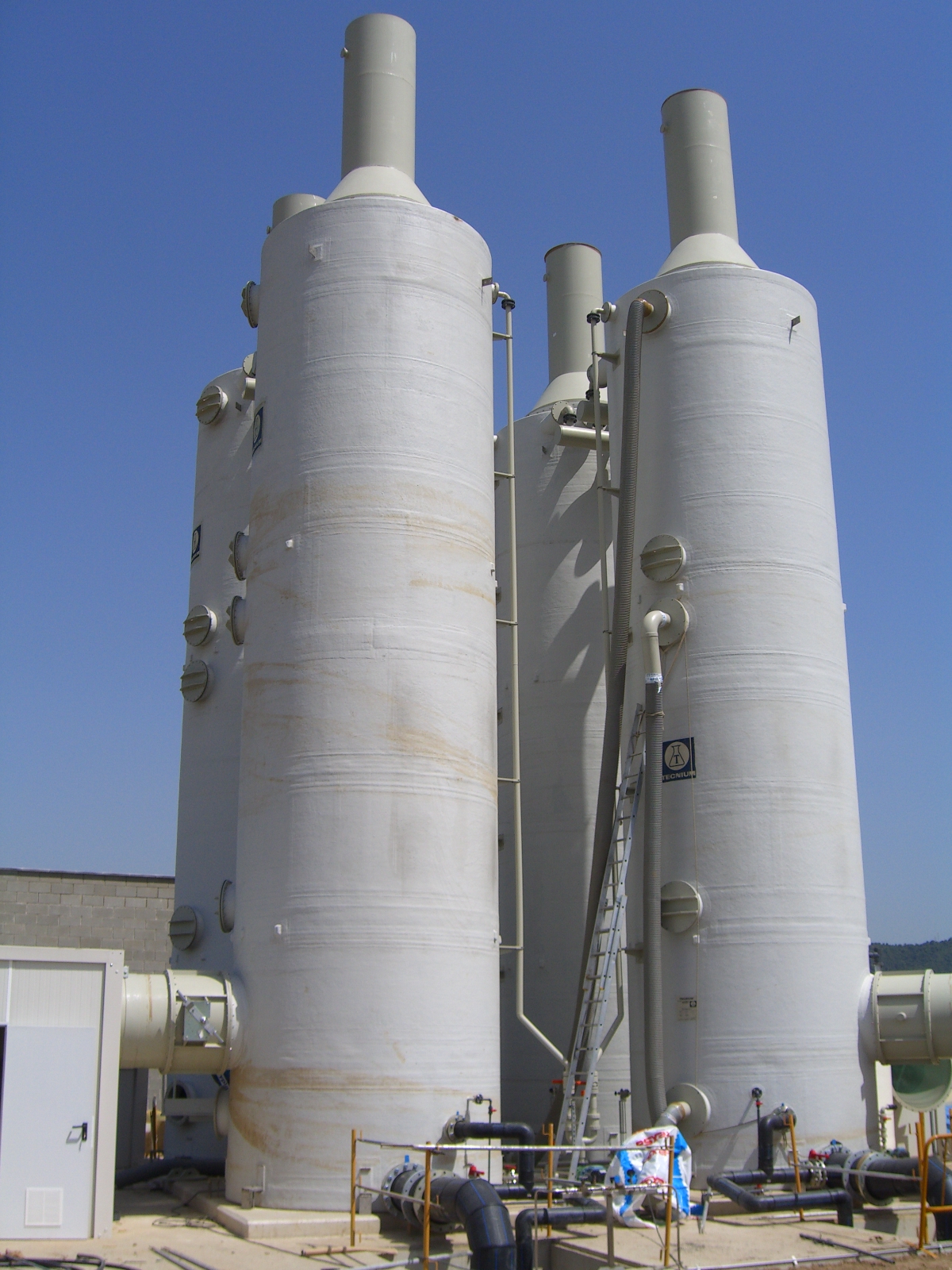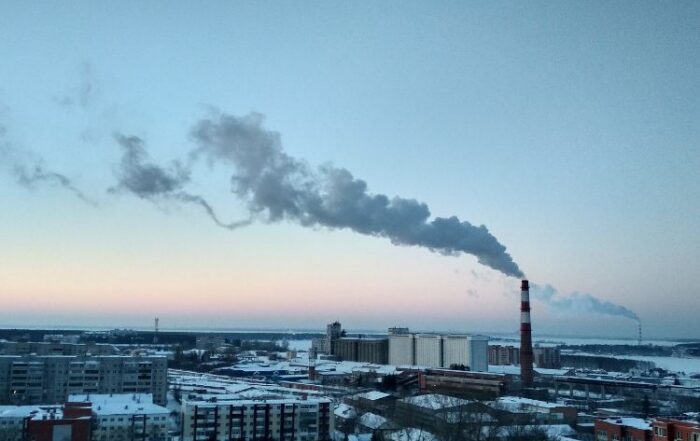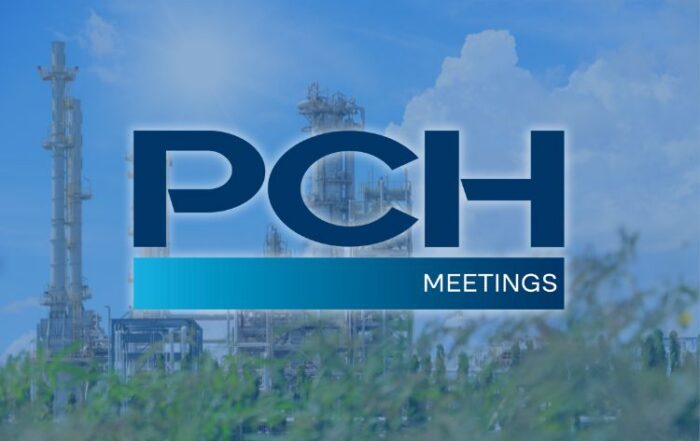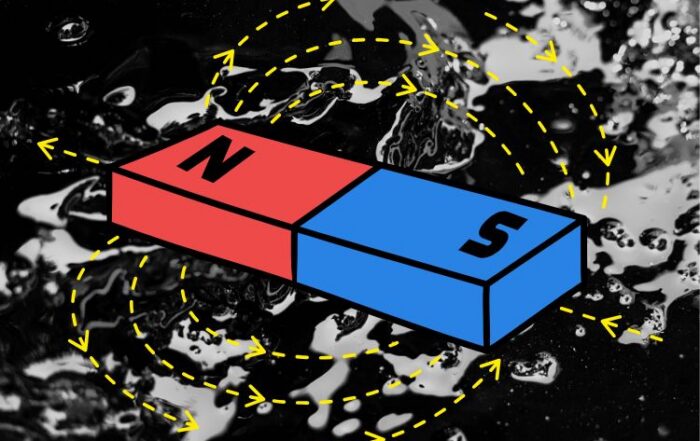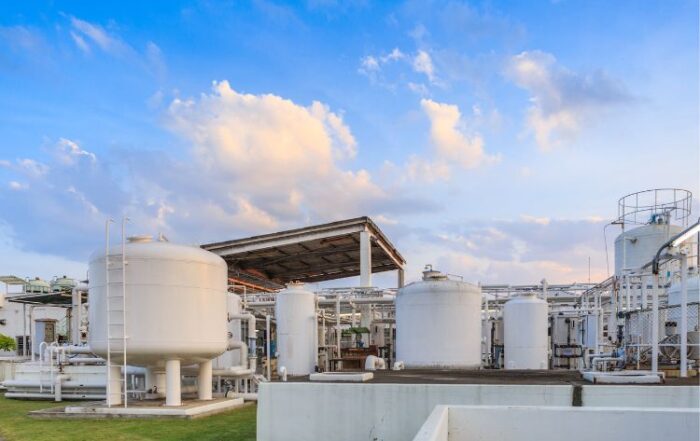
Lixiviate Stripping
It is often necessary in the treatment of any liquid effluent, remove certain compounds that can interfere with subsequent processing.
In general the removal of NH3, CO2 or Volatile Organic Compounds (VOC’s) can be performed by different methods.
One of them consists in the stripping, in which the volatile component is separated from the liquid effluent, through the action of an inductor element which can be air, steam, nitrogen, etc..
The process is done in countercurrent scrubbers, where is essential to achieve an optimal relation liquid/gas, as well as a packing with very high specific surface but that simultaneously prevents its flood.
The simplicity of the stripping process regarding installation and operating costs, makes it suitable for many applications.
TECNIUM accounts with numerous references for this type of treatment.
Removal of NH3
It is common to find the presence of ammonia in lixiviates from landfills and MBT plants, after evaporation processes where it is necessary to remove ammonia, before chemical-physical treatment.
Similarly, we may find the need to remove ammonia in effluents from the fertilizer or glass industry.
Another area of application is the treatment of lixiviates from manure treatment plants.
After removal of the ammonia, if the concentration in the air / vapor is high, it may require a further acidic absorption step (sulfuric acid, phosphoric, …).
CO2 Removal
Sometimes when using a reverse osmosis water and we need to correct the pH, we can eliminate the CO2 present in this water, using an air stripping process.
It is normal to find water with 100ppm of CO2 and achieve efficiencies of 99% removal.
Our algorithms allow us to optimize the relacción L/G with high performance packings.
Removal of VOC’s
Stripping technology can not be generalized for all volatile organic compounds present in a possible effluent.
From the study of their chemical nature, vapor pressure, etc., can be decided whether this technology is applicable.
We have applications and references removing aliphatic chains chlorinated compounds such as trichlorethylene, trichloroethane, etc.
H2S removal
Although this application is described in the treatment of biogas, we highlight this application when the biogas is enriched with methane removing the CO2 and H2S by compression at 9/10bar.
Lixiviate produce has a high concentration on H2S which is removed by stripping, to be subsequently deodorized.
More information
Give us your contact details and we will advise you on the best solution for your application.
View also
How Gas Scrubbing Technologies Will Drive Decarbonisation in the Chemical Sector
Decarbonisation as the Urgent Challenge for the Chemical Industry The chemical industry is entering one of the most transformative decades in its history. As regulatory pressure intensifies and global climate targets advance, [...]
Tecnium to attend PCH Meetings 2025 in Lyon
Leading Innovation in Chemical Process Equipment Tecnium will participate in the 21st edition of PCH Meetings, the leading international business convention for process, chemical, petrochemical, and pharmaceutical industries, to be held on [...]
Magnetic Drive Pumps: The Science Behind Leak-Free Chemical Transfer
Why Magnetic Drive Technology Matters In industrial environments where safety, reliability, and chemical containment are critical, even a small leak can have major consequences. Traditional centrifugal pumps, which rely on mechanical seals [...]
Biofiltration for Air Pollution Control
Introduction to Biofiltration and Air Pollution Control Air pollution control is a persistent challenge across multiple industries — from wastewater treatment to chemical manufacturing, food processing, and beyond. As regulations grow stricter [...]
ECHA 2025 Report
Why the ECHA 2025 Report Matters The European Chemicals Agency (ECHA) plays a central role in regulating the safe use of chemicals across the European Union. Through its guidance, risk assessments, and [...]
A Key Element for Environmental Protection in WWTPs
Why Gas and Odour Emissions in WWTPs Are an Environmental Issue Wastewater treatment plants (WWTPs) play a critical role in safeguarding public health and the environment. However, the treatment process itself can [...]


